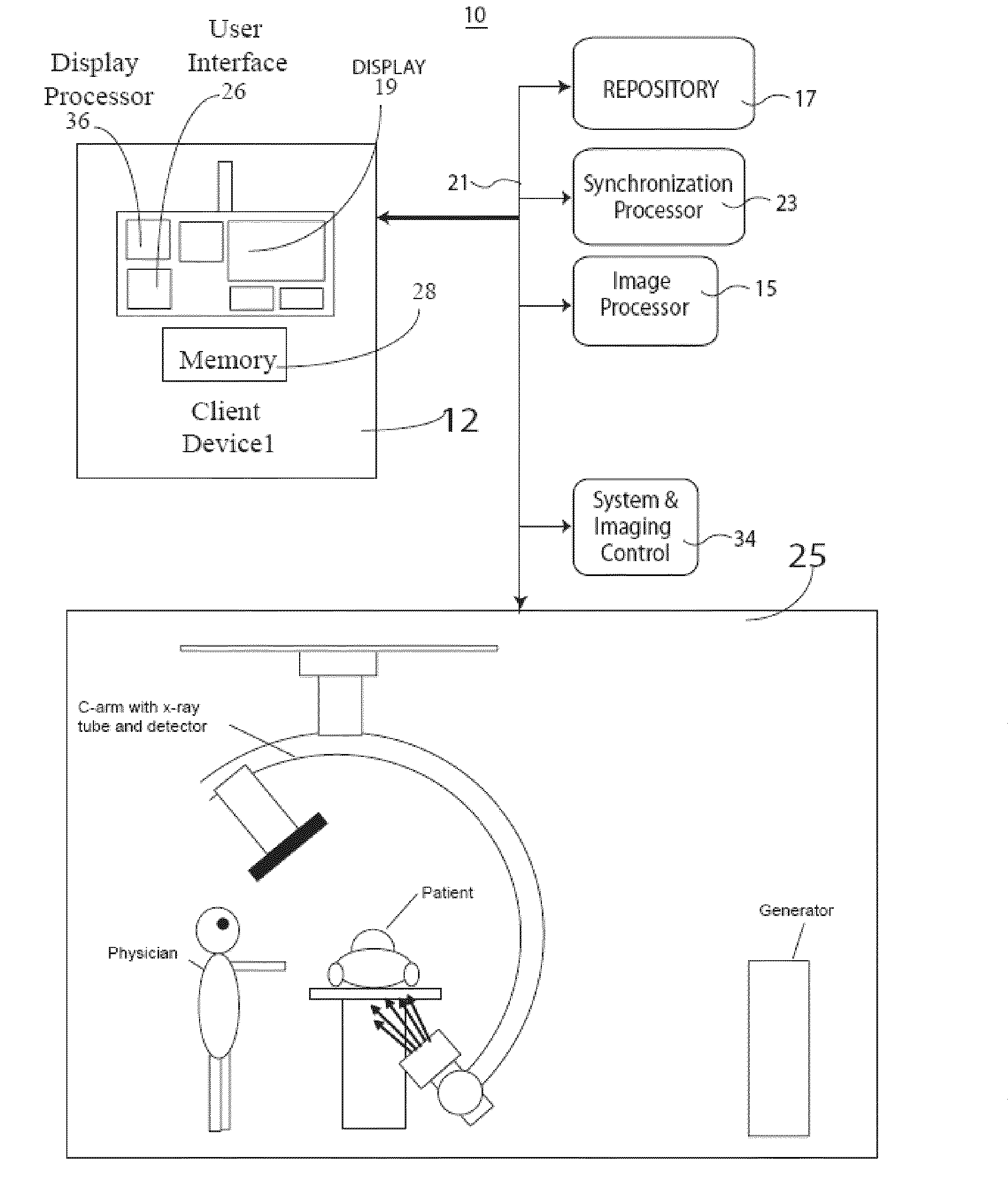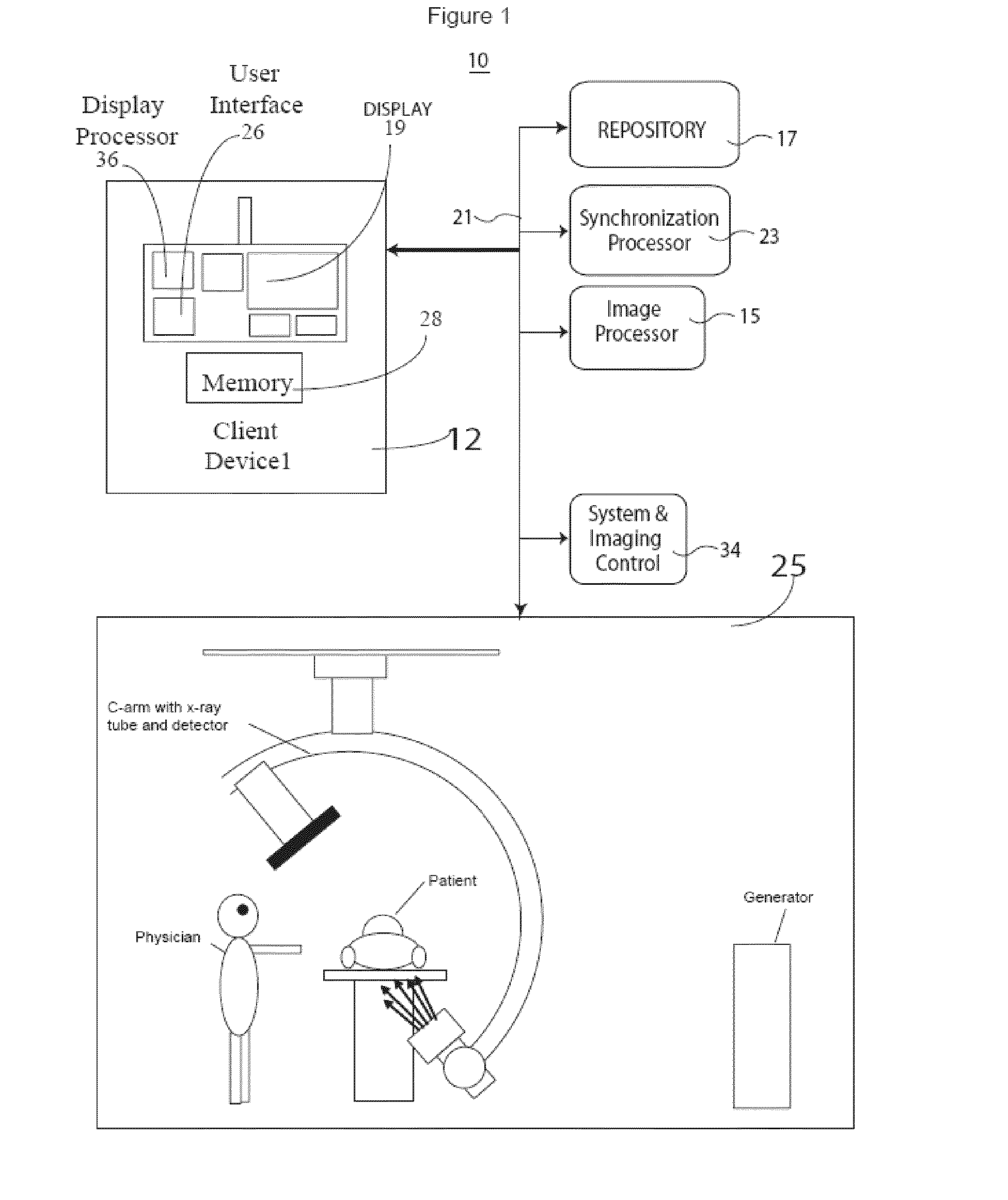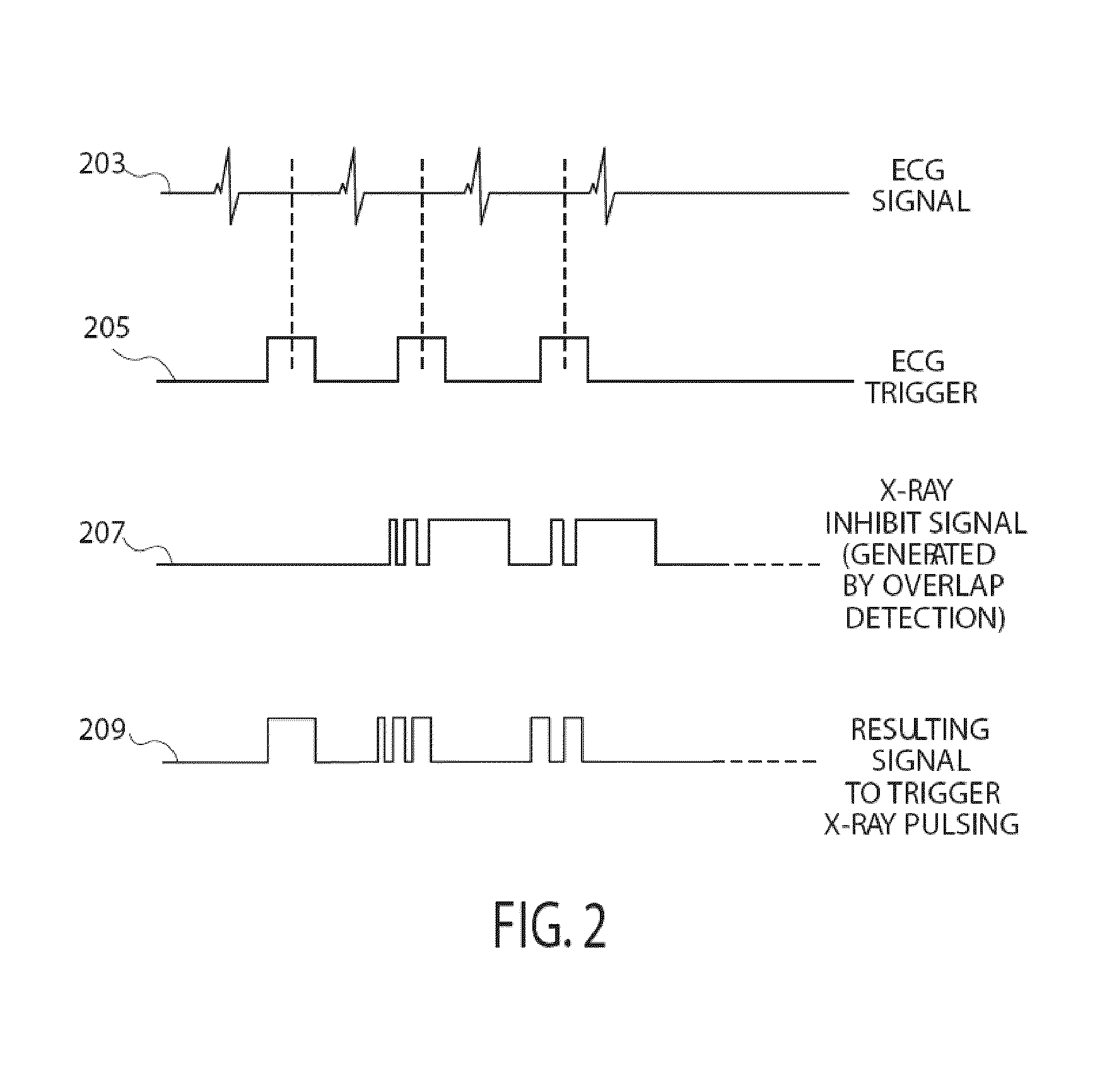3D medical anatomical image system using 2d images
- Summary
- Abstract
- Description
- Claims
- Application Information
AI Technical Summary
Benefits of technology
Problems solved by technology
Method used
Image
Examples
Embodiment Construction
[0017]A system reduces X-ray exposure of a patient by eliminating spatially redundant imaging and increasing image quality in 2D image acquisition for 3D image volume reconstruction by eliminating gaps in angular coverage in ECG triggered rotational image acquisition and eliminating redundant acquisition by monitoring and tracking a set of angles at which exposure has been performed. The system provides visual feedback of spatial coverage percentage during image acquisition. The system eliminates both overlaps and coverage gaps which reduces patient X-ray dosage and improves reconstructed 3D image volume quality. During a portion of an ECG cycle, the heart is relatively still. This fact is used by ECG triggered (or ECG gated) image acquisitions so that high intensity exposures are performed within this period and skipped or performed at lower radiation intensity outside of this period which advantageously reduces motion artifacts in a reconstructed 3D imaging volume dataset. High in...
PUM
 Login to View More
Login to View More Abstract
Description
Claims
Application Information
 Login to View More
Login to View More - R&D
- Intellectual Property
- Life Sciences
- Materials
- Tech Scout
- Unparalleled Data Quality
- Higher Quality Content
- 60% Fewer Hallucinations
Browse by: Latest US Patents, China's latest patents, Technical Efficacy Thesaurus, Application Domain, Technology Topic, Popular Technical Reports.
© 2025 PatSnap. All rights reserved.Legal|Privacy policy|Modern Slavery Act Transparency Statement|Sitemap|About US| Contact US: help@patsnap.com



